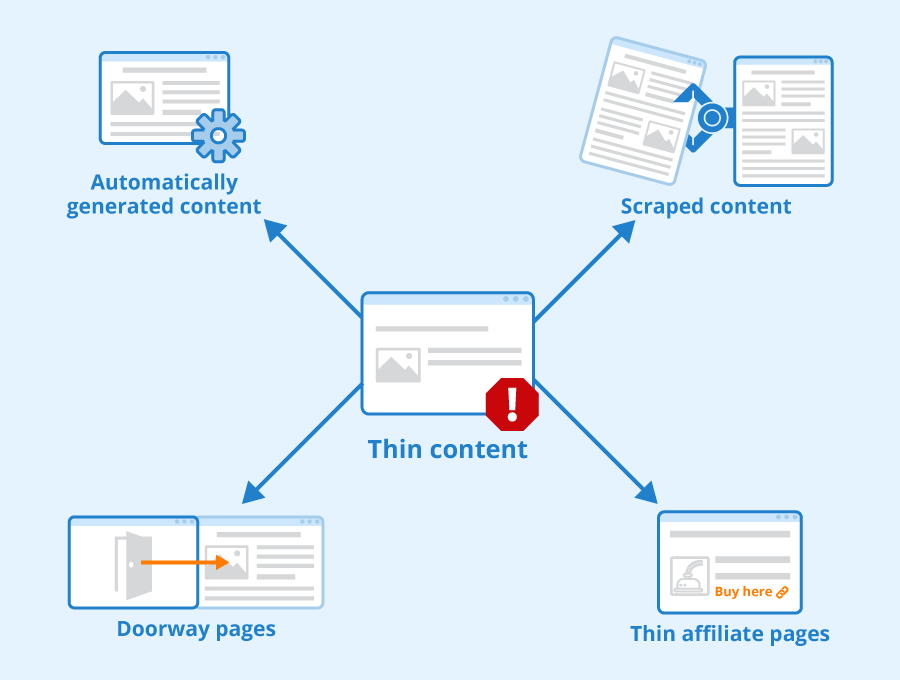Do you ever worry that your website content might fall short of Google’s standards and attract a dreaded penalty? If so, you’re not alone. Site owners across the globe face the challenge of “thin content,” which can torpedo search rankings and stall traffic. But the good news? You can take proactive, practical steps to avoid thin content penalty and keep your site healthy and competitive. In this comprehensive guide, you’ll unlock exactly what thin content is, why it matters, real-world examples, actionable ways to fix it, and answers to the most common questions about avoiding penalties. Ready to future-proof your site and boost your organic visibility? Let’s dive in.
What Is Thin Content and the Thin Content Penalty?
To understand how to avoid thin content penalty, you first need to grasp what thin content means in Google’s eyes. Thin content refers to pages that have little or no value to the user—think shallow posts, duplicate pages, doorway pages, or pages overloaded with ads and affiliate links but short on substance.

When Google finds a large number of such pages, your site may be hit with a manual action or algorithmic penalty—literally dropped rankings, lost visibility, and a shrinking audience. The 2024 Google algorithm now goes even further, using powerful signals to hunt down sites with “unhelpful” content. You don’t want to be in that group!
Thin content covers:
- Weak or irrelevant content
- Duplicate, scraped, or spun text
- Pages built just for SEO, not humans
- Lots of auto-generated content

Sites with thin content suffer from poor SEO, low user engagement, and are extremely vulnerable to Google’s thin content penalty. That’s why it’s critical to spot, fix, and avoid it as early as possible.
Why Avoiding Thin Content Penalty Matters
Dedicating effort to avoid thin content penalty delivers huge benefits for your business and website’s long-term health. Check out just a few:
Top Benefits:
- Higher Rankings: Google favors original, in-depth, and useful content, lifting authoritative sites higher.
- Greater Trust + Credibility: Users trust sites that answer their questions well.
- Better Conversion Rates: Detailed, informative content nudges readers to become subscribers, customers, or advocates.
- Penalty Protection: Avoid the crushing impact of a manual action or sudden drop in traffic.
- Future-Proof against Google Updates: Every search update targets low-value pages, so high-quality content is the best defense.
- Improved User Experience: Comprehensive content meets users’ needs and keeps them coming back for more.

Ultimately, avoiding thin content isn’t just about dodging penalties—it’s about scaling your business and delivering value in every piece of content.
Common Causes and Examples of Thin Content
Understanding what creates thin content will help you avoid the penalty. Here are some textbook examples that often trigger issues:
Real-World Thin Content Use Cases:
- Doorway pages: These are duplicated pages targeting slightly different keywords but offering no new insight. Example: Dozens of near-identical city landing pages for an HVAC company.
- Affiliate-only pages: Pages with lots of affiliate links and very little explanation or original content.
- Auto-generated text: Pages created by basic AI without editing, review, or unique value.
- Lack of depth: Blog posts answering complex topics with a few sentences, like “Best SEO tools” listing tools but no details or user perspective.
- Scraped/duplicate content: Republishing press releases or copying other sites.
- Empty category or tag pages: Thin archive pages on blogs or eCommerce sites with little to nothing on them.

Insider tip: If your content doesn’t offer something uniquely useful, it’s at risk! Run site audits and look for content with low word counts, poor engagement, or lots of similar pages.
How to Avoid Thin Content Penalty: Step-by-Step Process

Let’s get practical. Here’s your action plan to avoid thin content penalty and future-proof your site:
1. Audit Your Site for Existing Thin Content
Use Google Search Console, SEMrush, or Screaming Frog to crawl and identify pages with low word counts (<300-400 words), high bounce rates, or little organic traffic. Check for duplicate and near-duplicate content.

2. Expand, Combine, or Remove Weak Pages
Strengthen thin content by:
- Expanding posts with more details, examples, and unique data
- Combining several similar weak pages into a single comprehensive guide
- Removing (noindex/delete) truly useless or duplicated pages
Link related posts for maximum engagement.
3. Focus on E-E-A-T and User Intent
Google ranks content higher that demonstrates Experience, Expertise, Authoritativeness, and Trustworthiness (E-E-A-T). Make sure each page has a clear purpose, satisfies searcher intent, and is written by credible sources.

4. Prioritize Quality Over Quantity
Avoid publishing for the sake of volume. Every piece should solve a user’s problem, answer questions, or entertain. Long posts should be in-depth, not padded with fluff.
5. Add Unique Insights, Data, and Visuals
Supplement your articles with stats, charts, case studies, and original opinions. Include helpful images, infographics, or videos to add value.

6. Optimize for On-Page SEO
Use focus keywords, relevant secondary keywords, and natural long-tails throughout your content. Format with headers, short paragraphs, bullet points, and internal links to relevant blog posts and pages.
7. Regularly Refresh Your Content
Set a schedule to review old articles, update outdated information, and improve depth based on current trends. Google rewards “fresh” pages!

Challenges, Myths & Common Objections

Misunderstandings about thin content abound. Let’s set the record straight.
- Myth: More words automatically means you won’t get penalized.
Reality: Quality matters more than length. 2,000 words of fluff won’t save you if it adds no value. - Myth: Google ignores small websites or new blogs.
Reality: Penalties hit all sites—size/age don’t offer protection. - Objection: “I don’t have time to write long posts!”
Solution: Focus on quality over quantity. A few detailed guides outperform dozens of weak posts. - Myth: Only duplicate content triggers penalties.
Fact: Spun, AI-only, or shallow pages also risk penalization. - Challenge: Auditing an old or large site for thin content.
Remedy: Use auditing tools and prioritize based on analytics—start with lowest-traffic and highest-bounce pages. - Myth: Image-heavy pages don’t need much text.
Fact: Visuals should support, not replace, valuable written explanations.
Frequently Asked Questions (FAQs)
What is a thin content penalty?
A thin content penalty is when Google demotes or removes your site from search results due to low-value, shallow, or duplicate content. This can be manual (flagged by a reviewer) or algorithmic (auto-detected by algorithms).
How do I know if my site has thin content?
Look for pages with low word count, poor user engagement, high bounce rates, or little unique value compared to top-ranking competitors. Google Search Console can also alert you with manual actions regarding thin content.
How much content is enough to avoid thin content penalty?
There’s no exact number, but aim for 800+ words per post, focusing on depth, usefulness, and being more helpful than competing pages. The goal is quality over quantity.
Are AI-generated articles considered thin content?
If unedited, generic, or duplicated, yes—they risk penalty. But if you add unique value, human editing, examples, and original research, they’re less likely to be flagged.
How often should I check my site for thin content?
Perform an audit at least quarterly. Always review content before publishing and after any major Google update.
Should I delete all thin content pages?
Not always. Try to improve or merge thin pages with related ones to add value. Only delete (or noindex) those truly beyond saving or duplicated elsewhere.
Can images and videos help avoid thin content?
They help—but only when paired with relevant, in-depth written explanations. Visuals alone aren’t enough for SEO safety.
Is thin content a ranking factor in Google?
Indirectly, yes. Google doesn’t use “thin content” as a direct factor, but it does penalize poor, unhelpful, or duplicate pages—hurting your SEO.
How to fix Google’s manual thin content penalty?
Audit all pages, improve or remove thin ones, add original insights, and submit a reconsideration request via Search Console. Focus on lasting quality improvements.
Can doorway pages or spun content trigger a penalty?
Yes. Both doorway pages (multiple similar pages just for search) and spun/auto-generated content are top reasons for thin content penalties.
Conclusion: Start Protecting Your Site Today
To recap: avoiding thin content penalty is a must for any website that wants to rank and convert in 2024 and beyond. It’s not just about avoiding Google’s wrath—it’s about creating a site your audience loves and trusts.
Take action: Audit your site, focus on in-depth value, prioritize E-E-A-T, merge or improve weak pages, and keep refreshing your content. The rewards are higher rankings, a resilient business, and greater authority in your space.
Ready to transform your SEO? Start now, leverage the tips above, and watch your site grow without the fear of thin content penalties ever again.
